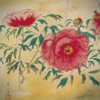Ōhashi Suiseki’s Summary | The Best of Tiger Painters (3/3)

Contents
Suma Period in Kōbe
1912: Move to Suma, Kōbe
Ōhashi Suiseki had gained a solid reputation by winning a series of prizes at exhibitions around the world, but he suffered from tuberculosis and moved to Suma, Kōbe in 1912, which was then an area of advanced tuberculosis treatment.
When Ōhashi Suiseki moved to the city, prominent figures from the Osaka-Kōbe political and business world formed a supporters’ association and welcomed him with open arms.
It was even said that ‘it is a shame for a wealthy person in the Osaka-Kōbe area not to have a Suiseki piece’.
From this period onwards, Ōhashi Suiseki’s tiger paintings began to change and evolve further, perfecting his own style, the Suma Style, characterised by dense background expression.
Around 1930 (Early Shōwa Period): Ranks Alongside the Two Great Masters of the East and West
Ōhashi Suiseki’s popularity is said to have been so high at the time that the price of his works soared alongside those of Yokoyama Taikan and Takeuchi Seihō, the two great masters of the East and West. The prices of popular artists such as Kawai Gyokudō, Uemura Shōen, Kaburaki Kiyokata and Murakami Kagaku were of course high, but the prices of these three artists were in a different class of high.
Despite this popularity, he had no interest in the central art world, such as the Bunten, Teiten and Inten exhibitions, and did not exhibit at all, which may be why he is known today as the ‘Solitary Painter’.
Last Years
1945
Evacuated to his home town of Ogaki after the air raid on Kōbe in 1945; after the war ended in August, he moved to his daughter’s home in Aichi Prefecture, but died of old age on 31 August; died aged 81.










